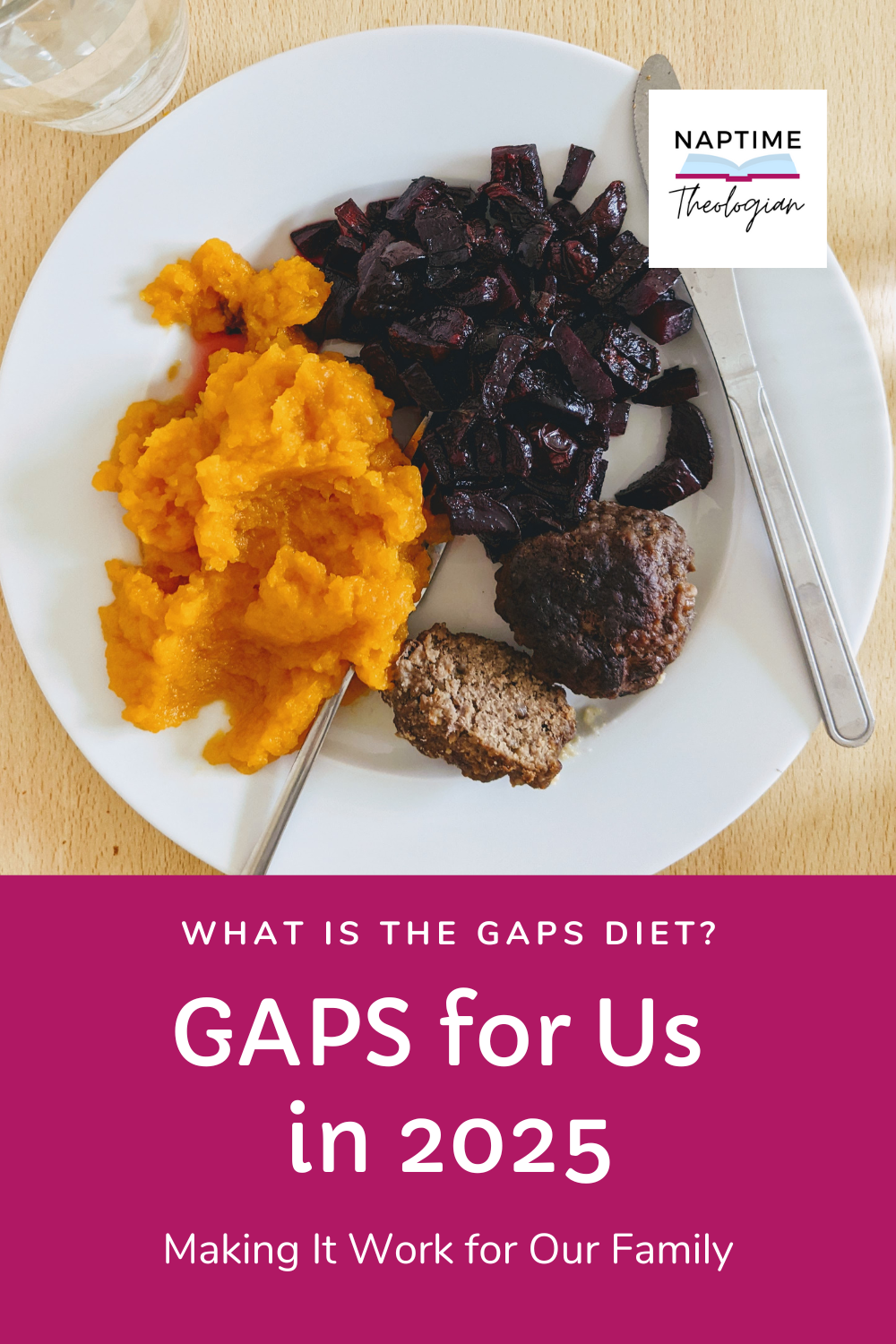*I am not a nutritionist or doctor. This post contains references to a specific diet that I have found helpful for my family, but please do your own research and consult your doctor before changing your diet.
Way back in 2020 my daughter was struggling with eczema and we did the GAPS diet to help her get better. We went through the introduction of foods and adding in things one-by-one until we could eat most everything that was allowed. This took us just about 2 years (though we saw improvement with her eczema right away). Afterwards, we transitioned into more of Weston A. Price diet (you can read about it here). But there were/are a lot of GAPS things that we still include in our everyday eating like sauerkraut and meat stock. Right after we finished the two years on the diet I got pregnant with my son and as He grew, we fed him the GAPS baby way and he has done well. He is almost two years old now.
Early this year, I heard of a GAPS practitioner who did the introduction diet once per year just to reset her body and health. I thought this was a great idea and wanted to try it out for myself over the Lenten fast. I didn’t go through the introduction stages, but I strictly ate the full GAPS Diet and it was so nice. I did not realize how much grains were affecting my digestion until I cut them out again completely. And, guess what happened, I got pregnant within those two months of being on the GAPS diet! Obviously, I can’t say it was just because of the diet, but I do wonder if it helped or was the reason I got pregnant.
Anyway, during those two months of the GAPS diet I realized how similar it is to the carnivore diet. On carnivore, you only eat meat and then on dirty carnivore, you eat meat and fruit. For GAPS you eat a lot of meat and meat stock, but you also eat probiotic-rich foods like sauerkraut, yogurt, and kefir. I see the carnivore diet online all the time, probably thanks to Jordan Peterson and his daughter promoting it. And, honestly, I’m so glad! I think it’s helpful for many people. But I also see where people have to stay on it forever or for many years and it makes me think that they should just try the GAPS diet instead!
All that to say, I’m very thankful for the GAPS diet in our family as it has made such a difference. I feel like everyone should do it at some point even if you don’t have major health issues to heal. As I go into this pregnancy, I think I will try to keep up with the full GAPS diet to avoid detoxing too much and to make sure I get enough carbs for the new baby. But I’m interested to see how I feel since I was very sick in my last pregnancy… maybe it will help! I’ll definitely keep you posted. 🙂
Now, I keep saying the GAPS diet like you know what I’m talking about. If you don’t, then keep reading! I’ve included a little summary just for your below.
What is the GAPS Diet?
GAPS stands for Gut and Psychology Syndrome. The GAPS diet was originally created by Dr. Natasha Campbell-McBride. And she outlines the instructions for the diet in this book. She is a doctor with higher education in nutrition and neurology. When her son was diagnosed with autism, she looked for a way to help him via his diet. She discovered that the body’s digestive system, the gut, is connected to brain function. And, this connection affects the whole body. So she created the GAPS diet to help her son heal his gut and, therefore, heal his brain function and the effects of autism.
You can read MUCH more about the GAPS diet here.
The GAPS diet focuses on three main things: healing and sealing a leaky gut, recreating a healthy gut flora by introducing friendly bacteria, and detoxing your gut and therefore, your body. This diet starts with an introduction diet that eliminates all not recommended foods and slowly adds food back into your diet as you track your body’s healing. As you add more things into your diet, you’ll eventually end up with a full list of recommended foods. After doing the introduction diet, many people stay on the full GAPS diet for a long time. And it is recommended that if you eat off of the GAPS diet for some time that you start again with the intro diet and build up back to full GAPS.
The gut-brain connection that Dr. Natasha discovered has helped many people with their ailments, much more than just the effects of autism. Because your brain is connected to every part of your body, the connection of the gut to the brain affects every part of your body. So many people have found healing from numerous psychological problems, eczema, and autoimmune disease to name a few.
Dr. Natasha recommends that people stay on the GAPS diet for 2 years to see healing in their bodies. This diet is not meant to be used forever. After the GAPS diet, it’s recommended to stay on a whole foods, probiotic rich diet for the rest of life, but not the GAPS diet particularly. Though, many families have found that staying on the GAPS diet forever is best for them. It would vary by household.
Some of My GAPS Recipes:
DIY Meat Stock
DIY Sauerkraut
Instant Pot Yogurt
Chicken Salad
Gluten-Free Pumpkin Pie Muffins



